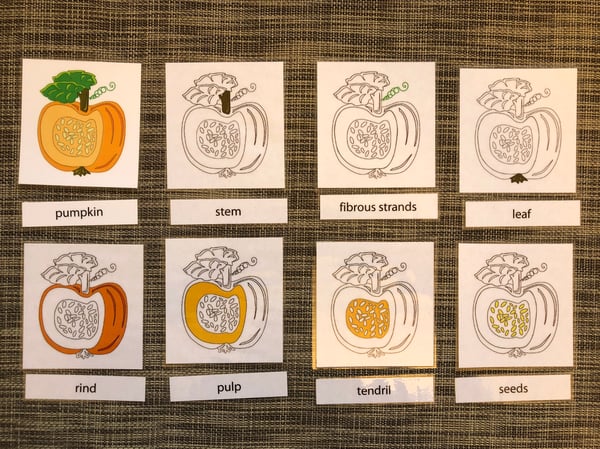Montessori learners have been exploring the science of things around us. Where does something come from? How did it get here? Why does it look like that?
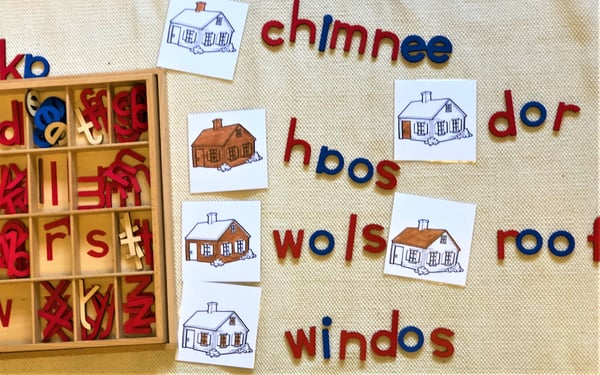
In the Montessori studio, we explore different types of homes and houses found around the world. We start by defining a house, and after eliminating all the living creatures that do not live in houses (bats, squirrels, hammerhead sharks, and ladybugs, just to name a few), we concluded it is a place where humans live.
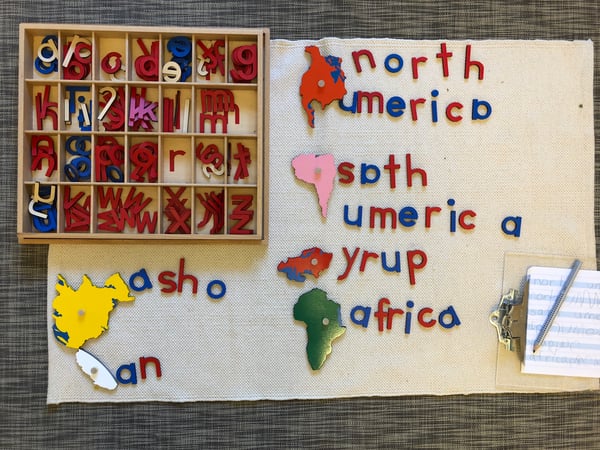
The Montessori studio houses all sorts of different projects and activities. One of our recent editions is a puzzle map of the world! Learners enjoy expanding their knowledge of the world we live in. Here is a fun example: A guide asked one of the learners where she went trick-or-treating, and she responded, “North America, and some in Australia.”
In Montessori, we start building geographical awareness by introducing our beautifully painted globe. We identify all the blue as water (oceans) and all the colored, raised parts as land (continents). With our new map of the world, we talk about how it represents the same forms on our globe, but it is as if the sphere has been cut into two halves and flattened. We share observations about the continents: Asia is the biggest continent; North America is touching South America; Australia is far away from North America. Finally, we learn songs about the continents to sing together!
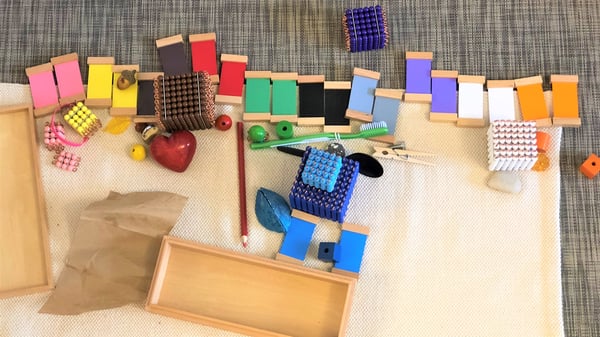
Early Morning
Every morning begins with each child taking time to build self-care skills, such as putting on and taking off their shoes independently, zipping and unzipping their own jacket, and meeting their own human needs (using the bathroom, preparing food for a hungry belly, or pouring a glass of water to quench a thirst).
Group Gathering
Some days we start our morning by gathering together to read a book or have a group lesson. The group lessons are usually centered around the cultural unit we are studying. For example, we might introduce new language classification cards, such as the parts of an apple. Then we would dissect an apple to examine each part: What does the skin feel like? What does the pulp taste like? What are seeds for?
Independent Work and Lessons
The uninterrupted morning work cycle is one of the pillars of a successful, authentic Montessori environment. After our group gathering, the children engage in independent work, choosing among the materials/activities they’ve had a lesson on. Over the course of the morning, the guide gives children one-on-one lessons or offers them extensions of previously explored materials. This might be looking at quantity (counting) and then matching the quantity to the symbol (number), matching shapes from a distance, discovering which objects sink in water and which float, matching items from the studio to the color tablets, or learning to isolate sounds and connect them to their corresponding letters (movable alphabet). During the morning work cycle, learners have snack when they see the snack table is available and they have completed and put back whatever activity they were previously doing. They serve themselves and clean up independently.
Outside
We wind down our morning by singing a song and perhaps reading a book before changing shoes, using the bathroom, and then heading outdoors.
Lunch
After putting on their indoor shoes and washing their hands, the children set up the studio for lunch. They work together to move the tables and chairs. Then the children lay out their placemats and collect their lunchboxes. Once everyone is settled, we recite a poem together before we begin eating. Guides might offer a few suggestions for what they could talk about with their lunch partner, such as, What is your favorite activity to do outside? Share a time when you saw something you had never seen before.
Afternoon: Napping, Baking, Outside Activities
After lunch, we transition into nap time for younger learners and the afternoon work cycle for older learners. Sometimes the older learners prepare afternoon snack for everyone. They might make muffins, zucchini bread, or pizza, all from scratch. When the nappers awake, all the children enjoy an afternoon snack together. After snack, we head outside for play and arts and crafts. If poor weather conditions prevent us from being outside for long periods of time, we do similar activities inside.

The Acton children love to bake! One of their favorites is bread from scratch. Add spring onions and sesame seeds to give a fresh twist and let your child knead the dough flat for some extra fine motor activity at home.
Ingredients
- 4 cups flour
- 2 teaspoon sugar
- 2 teaspoons dried instant yeast
- 1 cup water, lukewarm
- 1 tablespoon vegetable oil
- 1 - 2 stalks spring onions, finely chopped
- 1 tablespoon sesame seeds
- ⅛ teaspoon salt
DRIED APRICOT & OAT BARS
Acton learners have enjoyed coconut oat bars all winter, and this recipe adds our spring friend, the apricot, with its sweet and subtle saffron color!
Ingredients
- 2-3 apricots, cut into small pieces
- 1 2/3 cup of all purpose flour
- 1 2/3 cup of rolled oats
- 1 cup of packed brown sugar
- 12 tablespoons of butter, cold and cut into small cubes
- 1/2 teaspoon of salt
- 1/4 teaspoon of baking soda
FRUIT SALAD
With all the delicious fruits in season now, a fruit salad is an enjoyable snack for the children. Start by collecting assorted fruits of choice (cantaloupe, watermelon, apples, kiwis, etc). Cut larger fruits into smaller pieces or peel a fruit for your child who can then use cookie cutters to make fun shapes for their fruit salad. Once you have the fruits all cut up, place them into a bowl. Squeeze lemon juice and rip up a few fresh mint leaves before diving in!
Other enjoyable kitchen activities that your child can help with:
- Setting the table! We love placemats like this one to get young ones started or you can print a simple template like this
- Grating, chopping, or juicing fruits and/or vegetables at lunch or dinner times
- Loading & unloading the dishwasher or, better yet, washing the dishes
- Preparing a snack for themselves or a sibling
- Emerging readers can assist in reading a recipe!
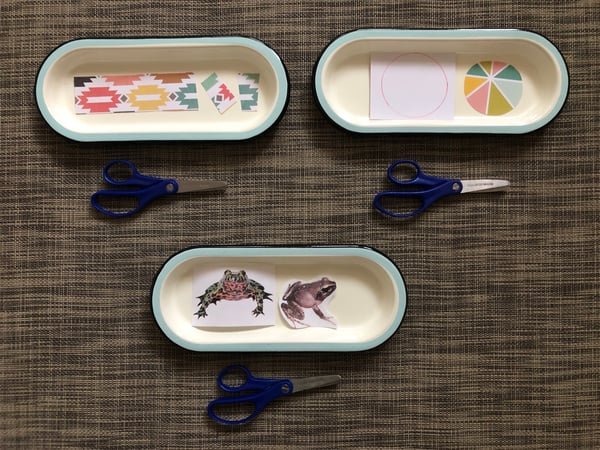
With spring, comes spring cleaning and organizing! The Montessori learners have been enjoying refreshing the studio by wiping down shelves and washing materials as we rotate our units of study. We rotate our materials for two reasons:

“The senses, being explorers of the world, open the way to knowledge.” — Maria Montessori
In our Acton Program for Families event, Acton parents are led through a series of sensory-based exercises using quintessential Montessori materials.
What do you notice about the Pink Tower? The pieces are cubes; they can ascend (or descend) in size; and, yes, the fact that it is entirely pink is an important observation!
The purpose of the sensorial area in the Montessori studio is not to create sensory perception, but to help the child develop and refine sensory perception. The sensorial materials isolate a particular quality; in the case of the Pink Tower, dimension. By isolating a quality, the child can focus his attention on it, explore it, expand on it, create a classification for it, experiment with how it relates to others of its kind, and, eventually, form an abstraction in his mind so that through his imagination, it is always with him.
Takeaways from working with the Montessori sensorial materials:
1 - Abstraction: The ability to create and hold pictures in the mind. Abstractions come from repeated interactions with concrete objects, until eventually the mind no longer needs the physical object but can go directly to the mental image. If I say the word “mug,” you have a picture in your mind of a mug, and you do not need to hold a mug in your hand to understand what I mean.
2 - Classification: The human tendency to look for patterns and make classifications of objects and behaviors. The child who points to a picture in a book and says “kitty” has already made a classification of cats as separate from dogs. Dogs and cats both have four legs, fur, ears, tails, teeth, whiskers, paws and claws, but the child notices what is different between cats and dogs. It is identifying the difference that aids in her classification.
3 - Language: We help the child focus her attention on the precise language that accompanies a specific sensorial experience. The experience is like the hook, and the language is the hat; without the hook, there is nothing on which to hang the hat.
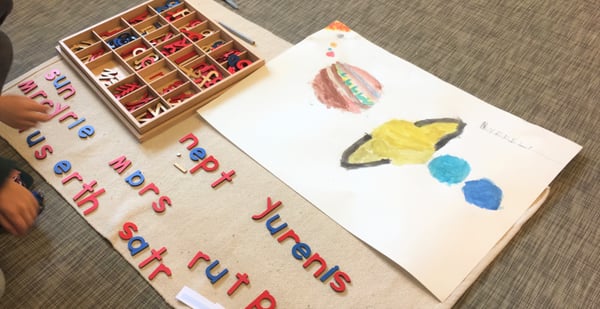
As part of our study of the solar system in the Acton Montessori studio, children learned about Curiosity, the rover that NASA sent to Mars in 2011 to get information about the red planet. “Curiosity” was a new word for many of the learners, and guides discussed with them that it means to wonder and want to know more about something. Then learners shared things that they were curious about. “I’m curious about why an asteroid hit the Earth,” said one learner. “I’m curious about why Mars is red,” said another.
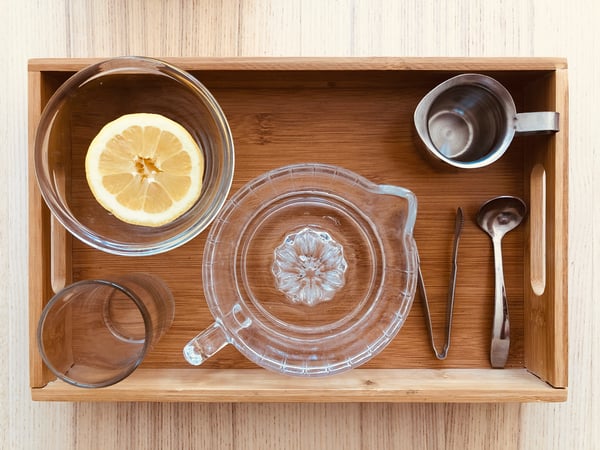
When Life Hands You Lemons...
….Make lemonade! In the Montessori studio, our learners experience many different cooking techniques. One of these is juicing. We have a bowl of halved lemons next to a tray containing a glass juicer, small bowl, pitcher (filled with sugar water), and stirrer. Our sugar water is premade by the guides in the morning and placed in a larger pitcher for each child to replenish independently for the next person.
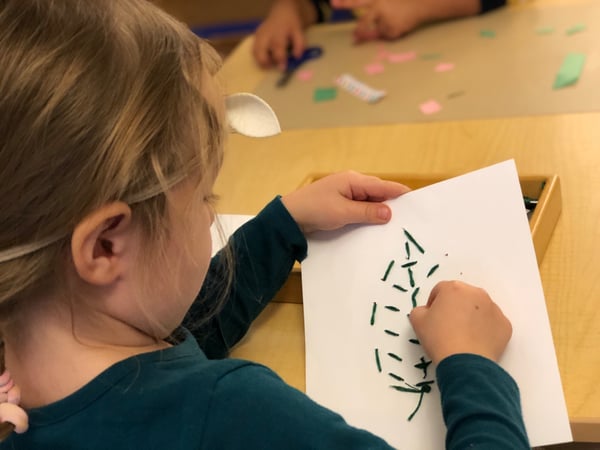
Sewing is becoming a popular activity in our Montessori studio. Knowing how to sew is a useful skill with lifelong practical applications and benefits. It requires concentration, focus, and problem solving, and helps develop hand-eye-coordination and fine motor skills. For these reasons, sewing falls under Practical Life activities in the Montessori curriculum. More specifically, sewing encourages children to care for themselves, meet their own needs, and foster functional independence. The goal is that one day a child notices there is a hole in his favorite socks, and follows up this observation with action—fixing it himself!
At the beginning of the year, we start with a variety of lacing tools, from simple beading to continuous lacing frames. When the child is ready, we introduce a blunt needle and thread and begin sewing on sturdy material, such as cardboard or cardstock, with premade holes. The trick is to follow the pattern and build muscle memory for basic stitching. From there, we introduce soft fabrics such as burlap and felt for a child to begin strengthening her hand by puncturing the holes independently and applying the movements she has been practicing.
This week, there are a variety of sewn mittens hanging on our display board outside the Montessori studio. Sewing also allows for children’s creativity to shine! The learners have fun picking fabric and deciding which color thread to use or which beads or buttons to add.
On cold, wintry days, this is a wonderful activity to replicate at home. Start sewing in your home with this great beginners board or these lacing frames. And check out Sewing in the Montessori Classroom for more information about the science behind sewing and projects for all ages.
